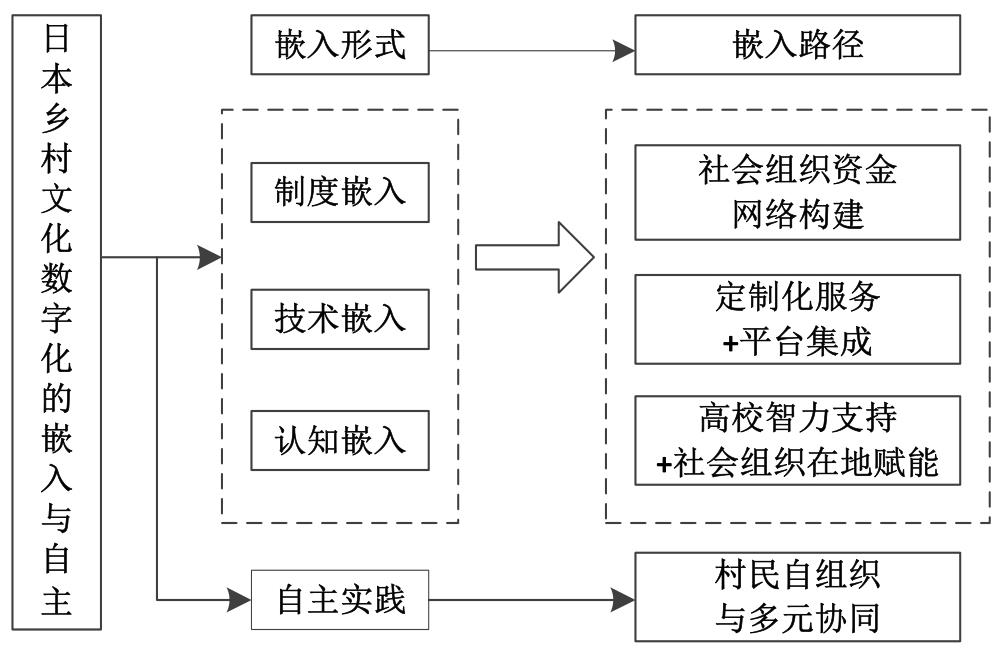| 1 |
徐达. 技术变革抑或创新尝试: 数字文化赋能城乡融合实现文化共富的探索研究[J]. 浙江大学学报(人文社会科学版), 2023, 53(4): 101-112.
|
|
XU D. A new application of technological innovation: Cultural common prosperity through urban and rural integration empowered by digital culture[J]. Journal of Zhejiang University (humanities and social sciences), 2023, 53(4): 101-112.
|
| 2 |
高春凤. 数字化赋能乡村公共文化空间的机理与路径[J]. 西北农林科技大学学报(社会科学版), 2025, 25(1): 17-27.
|
|
GAO C F. Mechanisms and pathways for digital empowerment of rural public cultural spaces[J]. Journal of northwest A&F university (social science edition), 2025, 25(1): 17-27.
|
| 3 |
姚巧华. 数字化赋能乡村文化振兴: 价值、困境与施策路径[J]. 贵州社会科学, 2024(7): 147-154.
|
|
YAO Q H. Digital empowering rural culture revitalization: Value, dilemma and policy path[J]. Guizhou social sciences, 2024(7): 147-154.
|
| 4 |
胡钢, 杨蕙而. 数字化助力乡村文化振兴: 功能定位与路径选择[J]. 西北农林科技大学学报(社会科学版), 2024, 24(3): 21-29.
|
|
HU G, YANG H E. The functional positioning and path selection of digitalization assisting rural cultural revitalization[J]. Journal of northwest A&F university (social science edition), 2024, 24(3): 21-29.
|
| 5 |
袁媛, 范建华. 数字化助推乡村文化产业高质量发展的内在逻辑与路径探索[J]. 理论月刊, 2023(8): 83-92.
|
|
YUAN Y, FAN J H. Exploration on the internal logic and path of digitalization promoting the high-quality development of rural cultural industry[J]. Theory monthly, 2023(8): 83-92.
|
| 6 |
地域アーカイブにおける課題と対策[EB/OL]. [2025-01-23]. .
|
|
Challenges and countermeasures for regional archives[EB/OL]. [2025-01-23]. .
|
| 7 |
赵浩华. 嵌入性理论视角下农村互助养老发展困境与破解[J]. 当代经济研究, 2024(2): 94-104.
|
|
ZHAO H H. The development dilemma and solution for rural mutual support for the aged from the perspective of embeddedness theory[J]. Contemporary economic research, 2024(2): 94-104.
|
| 8 |
王思斌. 中国社会工作的嵌入性发展[J]. 社会科学战线, 2011(2): 206-222.
|
|
WANG S B. The embedded development of social work in China[J]. Social science front, 2011(2): 206-222.
|
| 9 |
田山健二. 持続可能性という観点でADEACを考える[J]. デジタルアーカイブ学会誌, 2022, 6(4): 163-166.
|
|
TANAYAMA K. Considering ADEAC from the perspective of sustainability[J]. Journal of the digital archives society, 2022, 6(4): 163-166.
|
| 10 |
榎本千賀子. 「村の肖像」制作の現場から[M]//原田健一, 水島久光. 手と足と目と耳――地域と映像アーカイブをめぐる実践と研究. 东京: 学文社, 2018: 143-163.
|
|
ENOMOTO C. From the field of "village portrait" production[M]// HARA K, MIZUSHIMA H. Hands, feet, eyes, and ears: Practices and research on regional and video archives. Tokyo: Gakubunsha, 2018: 143-163.
|
| 11 |
岛袋美由纪, 三嶋启二. 住民主体の地域デジタルアーカイブ構築と活用によるシビックプライド向上の展望: 沖縄県那覇市首里石嶺町の事例から[J]. デジタルアーカイブ学会誌, 2020, 4(2): 89-92.
|
|
SHIMABUKURO M, MISIMA K. Prospects for enhancing civic pride through resident-led regional digital archive construction and utilization: A case study of Shuri Ishinomae-cho, Naha City, Okinawa Prefecture[J]. Journal of the digital archives society, 2020, 4(2): 89-92.
|
| 12 |
とみおかアーカイブ・ミュージアム条例[EB/OL]. [2025-01-23]. .
|
|
Tomioka archives & museum ordinance[EB/OL]. [2025-01-23]. .
|
| 13 |
前川道博. 分散型デジタルコモンズの汎用モデル開発: 下諏訪町地域アーカイブの構築を通して[J]. デジタルアーカイブ学会誌, 2020, 4(2): 85-88.
|
|
MAEKAWA M. Development of a generic model for decentralized digital commons: through the construction of the Shimosuwa Town regional archive[J]. Journal of the digital archives society, 2020, 4(2): 85-88.
|
| 14 |
地域住民参加型デジタルアーカイブの 推進に関する調査検討会. 地域住民参加型デジタルアーカイブの推進に関する調査検討会報告書 平成22年[R]. 东京: 关东综合通信局, 2010.
|
|
Survey and Study Committee on the Promotion of Community-Based Digital Archives. Report on the promotion of community-based digital archives, Heisei 22[R]. Tokyo: Kanto Bureau of Telecommunications, 2010.
|






